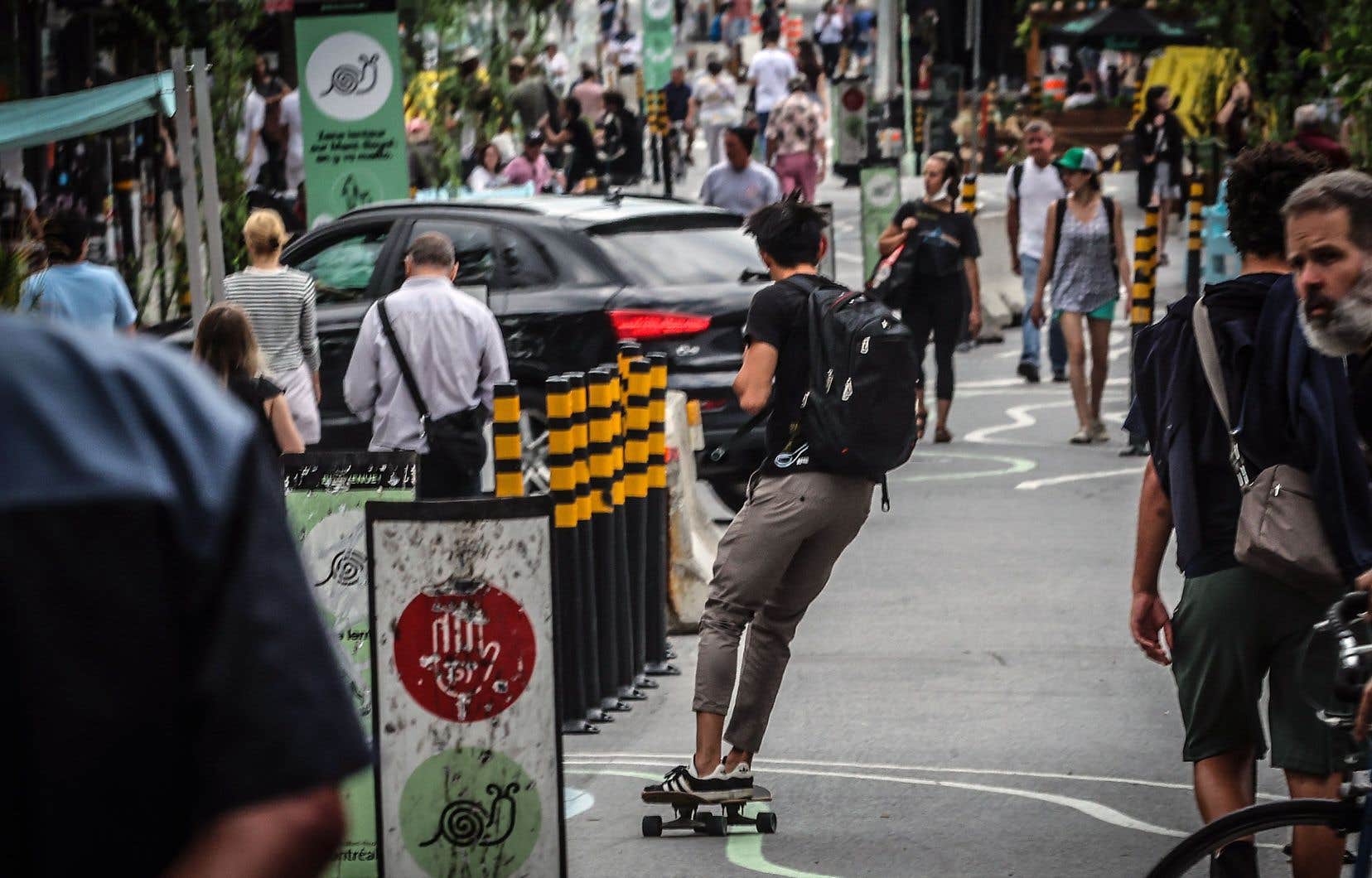There will again be 10 main pedestrian streets in Montreal this summer, Mayor Valérie Plante announced Tuesday. For the next few years, it does not rule out increasing this number, provided however that the impacts of these developments on construction sites and public transport are taken into account.
Returning from a trip to Europe, Ms. Plante praised Tuesday the quality of pedestrian streets in Montreal, which will be back this year on commercial arteries located in seven boroughs of the metropolis. The first to open the ball was rue Sainte-Catherine Ouest, a section of nearly 800 meters of which has been reserved for pedestrians since Monday. The others will follow in the coming weeks and will remain reserved for pedestrians for a period varying from three to six months, depending on the sector.
“I came back from Europe, you know that. And there, I was inspired by several things: I was inspired by mobility options and by innovations in financing affordable and social housing. But there is one thing that we have absolutely nothing to envy of Europe and these are our pedestrian streets, ”launched the mayoress on Tuesday afternoon, during a press briefing held at the Hôtel de city. There are many pedestrian streets in London and Paris, among other places, but these “are far from offering the experience offered by pedestrian streets in Montreal,” argued the head of Projet Montréal.
Last year, the City announced funding of $12 million over a three-year period to financially support the commercial development corporations (SDCs) that are responsible for the pedestrian streets on their territory. This sum aims in particular to finance the installation of street furniture on these commercial arteries and the animation of these, with the aim of attracting many residents and tourists.
“Pedestrian streets bring significant benefits, both for the local economy and for the quality of life in the neighborhoods,” noted the adviser responsible for transport and mobility on the executive committee, Sophie Mauzerolle.
Citing data collected by different SDCs, the elected official indicated that she noted last summer “a considerable increase in traffic on pedestrian streets”. “Last year, pedestrian traffic jumped 73% on Sainte-Catherine West, 86% on Duluth, and we see similar figures, both on the [rue Wellington] than in Saint-Denis,” said Ms. Mauzerolle. A traffic that benefits merchants, according to her, since pedestrians are more inclined than motorists to stop during their walk to “visit certain businesses” that they cross.
Asked whether motorists are likely to have more difficulty getting to Montreal and taking advantage of its commercial arteries this summer, Valérie Plante recalled that Montreal, with its vast road network, “belongs above all to motorists and to truckers.
“I’m not saying it’s a bad thing, but it’s a reality. And so, what we’re saying is that in the summer, we want to give people the opportunity to experience their local commercial streets differently,” added Ms. Plante. She thus invited motorists to prioritize public transit to go shopping on the commercial arteries of the metropolis this summer.
Challenges
Considering the popularity of these initiatives, why not increase the number of pedestrian streets this year, compared to the last summer season? In response, Mayor Valérie Plante recalled that it is not “as easy as it seems” to develop pedestrian streets. In particular, it is necessary to take into account the impacts of these on the passage of buses of the Société de transport de Montréal, but also on the construction sites in progress on several road arteries of the metropolis, she listed.
“I think there has to be a balance based on the needs of the population. So far, the summer period has been a real success for all the pedestrian streets,” said Ms. Plante, while being open to other projects of this type being added to the list “in the coming years “. Moreover, to the 10 main pedestrian streets which will return this summer could be added local initiatives taken by certain boroughs, noted Sophie Mauzerolle.
“Obviously, each section is different, each neighborhood is different. We cannot have wall to wall, but we are there to support the various pedestrian streets, ”added Ms. Plante.
An approach supported by the President and CEO of the Board of Trade of Metropolitan Montreal, Michel Leblanc. “That we make pedestrian streets over time, well advertised, is the right approach,” he argued, in an interview with the Duty.
“The only issue that could arise is if we take arteries that are both commercial arteries and transit arteries. There, you have to be very careful, ”he said, while specifying that none of these road links is currently targeted by a pedestrianization project for the City.
